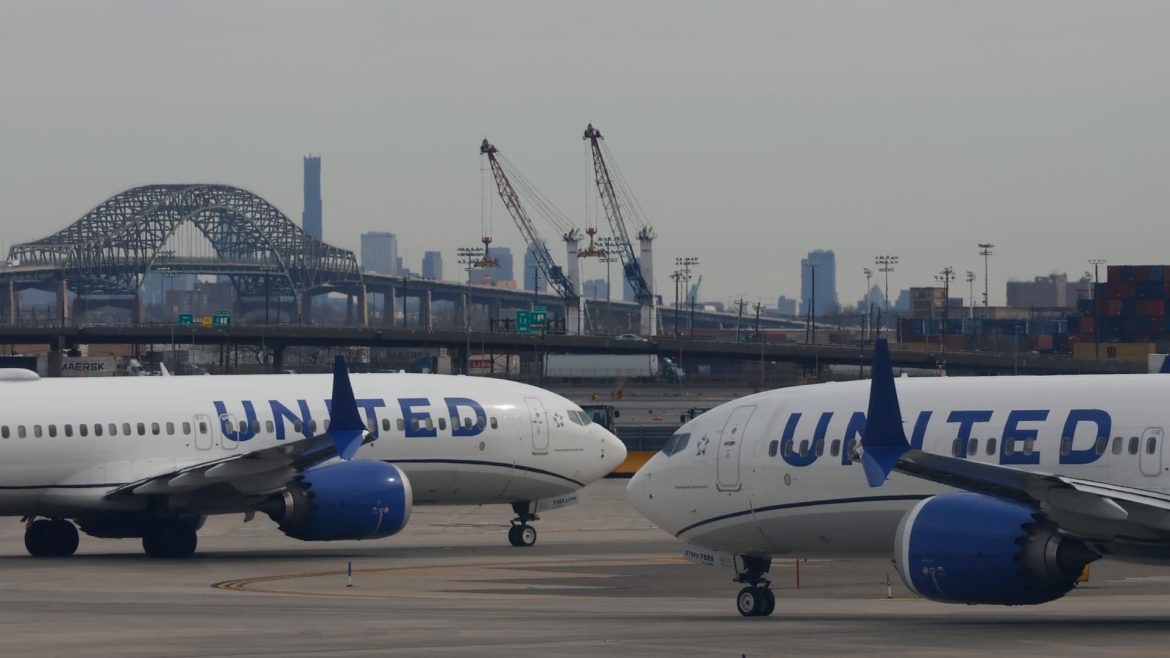Newark Airport Disruptions: A Comprehensive Analysis
The recent flight disruptions at Newark Liberty International Airport have been a significant concern for travelers and airlines alike. United Airlines, one of the major carriers operating out of Newark, has repeatedly cited issues with the Federal Aviation Administration (FAA) as the primary cause of these disruptions. This report delves into the underlying factors contributing to the chaos, the impact on passengers, and potential solutions to mitigate future issues.
The Root Causes of Disruptions
FAA Staffing Shortages
One of the most pressing issues highlighted by United Airlines is the acute shortage of air traffic controllers. The FAA has been forced to reduce traffic flows to Newark due to low staffing levels, particularly at the Philadelphia TRACON (Terminal Radar Approach Control), which manages the airspace around Newark. This shortage has led to significant delays, cancellations, and longer taxi times, affecting hundreds of thousands of travelers.
On numerous occasions, the FAA has had to implement ground stops and reduce arrival and departure rates at Newark. For instance, in November, the FAA reported low staffing on 12 of the first 25 days, disrupting over 343,000 United travelers. The staffing issues have been exacerbated by the relocation of control of the Newark airspace area to Philadelphia, which was intended to address congestion but has instead added to the strain.
Technology and Equipment Failures
In addition to staffing shortages, technology and equipment failures have played a significant role in the disruptions. The FAA has experienced several technology outages and equipment failures that have grounded flights and caused extensive delays. For example, an equipment issue in April led to major disruptions, with flights delayed by as much as five hours as the tarmac became packed with planes waiting to depart.
The FAA’s ground stop for Newark-bound flights due to an equipment failure further underscored the vulnerabilities in the system. These outages not only affect the timely departure and arrival of flights but also create a ripple effect, causing delays and cancellations across the network.
Runway Construction and High Winds
Runway construction at Newark has also contributed to the delays. A 60-day construction project on one of the airport’s three runways began in mid-April, adding pressure to the already strained system. The construction has led to slower traffic flow and bottlenecks, exacerbating the delays caused by staffing and equipment issues.
High winds have also been a factor, forcing the diversion of at least 21 flights. The combination of construction, high winds, and other factors has created a perfect storm of disruptions, making it difficult for airlines to maintain their schedules.
Impact on Passengers
The disruptions at Newark have had a profound impact on passengers. Travelers have faced hours-long delays, canceled flights, and long taxi times, leading to frustration and inconvenience. The situation has been particularly challenging during high-demand periods, such as the Thanksgiving holiday, when the demand for air travel is at its peak.
United Airlines CEO Scott Kirby has expressed his frustration, stating that the FAA’s issues with “staffing and inexperience” have resulted in thousands of delays and cancellations. The airline has had to divert flights, delay departures, and cancel services, all of which have a significant impact on passenger experience and satisfaction.
Mitigating Future Disruptions
To address the ongoing issues at Newark, several steps can be taken to mitigate future disruptions:
Addressing Staffing Shortages
The FAA needs to prioritize recruiting and training more air traffic controllers to address the staffing shortages. This includes offering competitive salaries, better working conditions, and opportunities for career advancement. Additionally, the FAA should consider relocating some of the air traffic control responsibilities back to Newark to reduce the strain on the Philadelphia TRACON.
Investing in Technology and Equipment
The FAA must invest in modernizing its technology and equipment to reduce the risk of outages and failures. This includes upgrading radar systems, communication equipment, and other critical infrastructure. Regular maintenance and upgrades will ensure that the technology is reliable and can handle the high volume of traffic at Newark.
Managing Construction and Weather Factors
The FAA and airport authorities should coordinate construction projects to minimize their impact on flight operations. This includes scheduling construction during off-peak hours and providing real-time updates to airlines and passengers. Additionally, airlines should have contingency plans in place to manage disruptions caused by high winds and other weather-related factors.
Conclusion
A Path Forward
The flight disruptions at Newark Liberty International Airport are a result of a combination of factors, including FAA staffing shortages, technology and equipment failures, and runway construction. These issues have had a significant impact on passengers, leading to delays, cancellations, and frustration. To mitigate future disruptions, the FAA and airport authorities must address staffing issues, invest in technology and equipment, and better manage construction and weather-related factors. By taking these steps, they can ensure a more reliable and efficient air travel experience for passengers.


